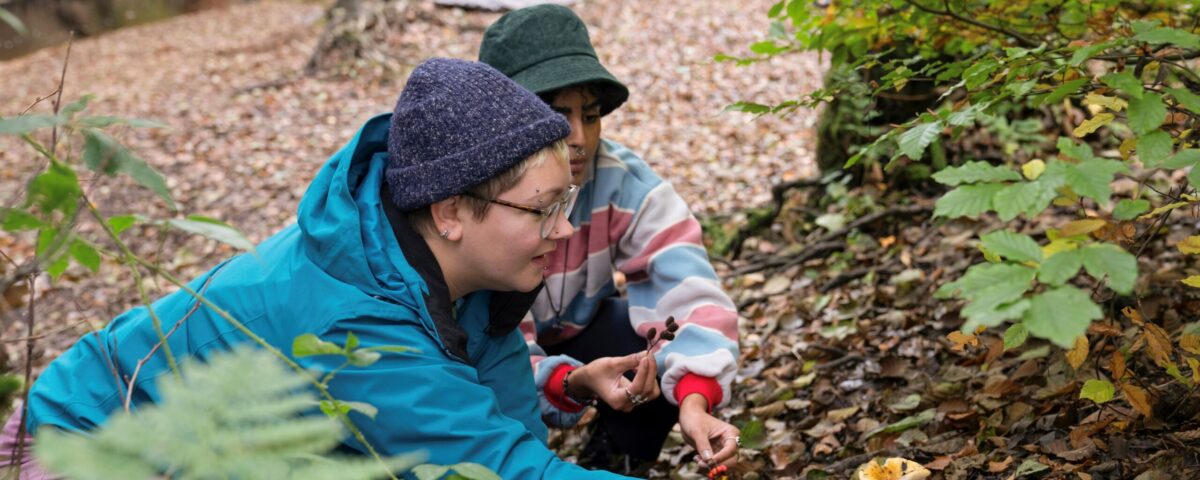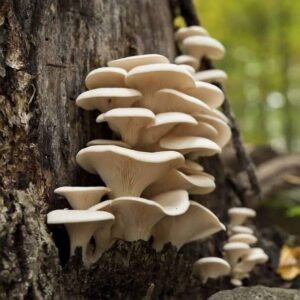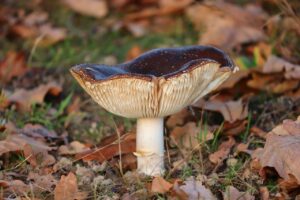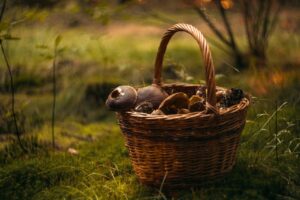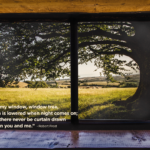
A Poem as Lovely as a Tree…

Road Trip – Berks County, Reading, PA
The forest keeps an abundance of creatures alive and kicking every day. With its plentiful resources, it’s not a surprise that it can keep us humans alive and kicking as well. But only if you know where to look.
Whether you’re looking to scavenge the forest for your grocery shopping list, live off the land while camping, or even prepare yourself like a wilderness scout in case of emergency, nature’s kitchen has plenty of bounty to offer. It’s important to know what’s okay to ingest and what’s not. So put on your aprons and bug spray, and get ready to (safely) forage for a meal on the wild side.
An Affair of Fungi Fares
There’s a fungus among us … and it may or may not be poisonous. A feast from the fungi family can be delicious and healthy. The forest can be an incredible place to scour for a mushroom meal, but it's also important to understand that even “safe to eat” often means “once cooked” as opposed to raw, so get your research in before ingesting. PA has incredible communities built around mushroom foraging and education. Check out the Pennsylvania Foragers Club and the Western Pennsylvania Mushroom Club.
Safe: Oyster Mushrooms and Chanterelles
One of the more common mushrooms found in Pennsylvania (and one you could quite easily grow yourself!) is the Oyster Mushroom.
Raw oyster mushrooms are often a creamy, ivory white with ruffled or scalloped edges. They grow in large clumps that spread in a trail along the trunks of dead deciduous trees. Oysters are also actually noted as having a faint licorice smell. Yum!
While Oyster mushrooms are more conservative in style, Chanterelles are bold and funky. Great for beginning foragers, these shrooms boast a bright orange color and a flower-esque
funnel shape, making them easy to spot. While they emit a fruity aroma, they’ve got a bit of a kick with their slight peppery taste. Double yum! They tend to call ivy their homes, scattered around coniferous forests.
Mushroom lovers already know a dozen ways to prepare them, but there are plenty of great recipes. Try a stir fry – or maybe a sauté with garlic and butter. BonAppetit.com has created a comprehensive list of some of the most delicious mushroom recipes.
Not Safe: The Death Cap and The Fool’s Funnel
Aptly named, the Death Cap is the deadliest known mushroom to humans and accounts for about 90% of mushroom poisonings worldwide, but also is an invasive species that is becoming more and more common within the U.S.
Since this shroom can be easily confused with edible fungi such as field and paddy straw mushrooms, so how do you know? Unfortunately, there’s no skull and crossbones warning on them—but look for a crowded white layer of gills underneath, a skirt-like membrane at the top of the stalk, and a sticky, residue-leaving layer on the mushroom’s cap (yes, they are safe to touch – just not to eat). Yuck.
The Fool’s Funnel is less common, but just as treacherous. This white-gilled fungus is often identified through its cap blotchiness and often upturned shape, hence the funnel title. They also often grow in what are called “fairy rings.” But do not let the ethereal name “fool” you, as any fairy ring of Fool’s Funnel is a dangerous one.
One thing early Pennsylvanians didn’t have was an online list of mushrooms. Luckily, we have several. INaturalist features a Pennsylvania Fungi Checklist that covers all the mushrooms that can be found in the state. Be sure to check out the details and pictures and get to know your mushrooms before eating. And PennLive shares a list of seven mushrooms that will kill you. Definitely worth reading.
Nature’s Berry Buffet
What is a hike without a quick snack hanging from a bush here and there? And what about a warm piece of toast without a slab of fresh fruit jelly? Berry foraging is a fun activity that can easily lead to an enormous number of other activities. Make a marmalade, create house decor with berries, or maybe make it a family affair and turn them into natural paint right in front of your children’s eyes. Just don’t use the poisonous ones, please!
Safe: Elderberries
Elderberries, deep purple and perfectly circular with red stems, are somewhat of
a superfruit. Not only is their tart taste perfect for juices and jams once cooked, but their compounds are a famous cure-all. Known to aid in colds and flus, the berry’s many vitamins boost your immune system. It works double time – also protecting your heart and relieving stress. You’ll find these tasty, healthy berries, where else but on an elderberry tree, which oddly enough looks more like a shrub.
Not Safe: Holly
Ho ho NO! They may be perfect for holiday decorating, holly berries are
poisonous to people and pets, so be sure to remove them from boughs when decorating. After eating only two berries, a person can develop some pretty severe symptoms that are not very holiday friendly. With bright cherry red with pointy sharp leaves, they’re pretty easy to spot. Funnily enough, they grow best when not in cold, wintry environments. So why are they such a staple of Christmas? Birds & Bloom gives the full history.
Plant Provender’s and Flower Fodder
Whether or not you’re a herbivore, you’ve got to admit that almost nothing beats the freshness and feel of greens. Flowers too? Oh, yes. People often forget that many flowers are edible as well (for me, nothing beats the sweet and floral taste of honeysuckle in the spring!), but just like mushrooms or berries, those unassuming of leaves, pods, and petals can be poisonous.
Safe: Dandelions
Never eaten a dandelion? Don’t know what part to eat? Try all of it—from the stem to the leaves, down to the very petals of the flower. That bright butter yellow is easy to find in almost any forest or park. And the health benefits are astounding— packed with vitamins, they’ve been known to help with stomach and liver complaints!
Blanche the leaves and use them as garnishes in salad or boil them into a soup, even use the pollen to add some pizzazz to an omelet. But what about those petals? Tea lovers may want to make dandelion wine. Curious what other plants can be used in a summer wine? Try lavender, lilacs, lilies, and tulips!
Not Safe: Wisteria & The Virginia Creeper
The wisteria is tempting, to say the least. Its purple dangling petals, falling into the shape of grape bundles, make it look like a fairytale flower. But unfortunately, every part of this plant is unsafe to eat. The fragrant velvety seed pods seem as if they would be edible, but can easily cause nausea, or worse.
More green than floral, the Virginia Creeper is an ivy that although decorative, is not delicious – particularly the leaves and the berries. The creeper grows in leaves of three and contains oxalate crystals, which cause nausea and stomach pain after ingesting. You know what they say, “Leaves of three, let it be; leaves of five, let it thrive!”
So, next time you’re on the trail in a local PA park, or anywhere, grab a fresh, tasty snack, courtesy of nature, but only if you’re safe about how you snack. There are plenty of resources to find out how to forage, where to find what, and how to identify if something is safe to ingest. It’s important to always check before eating. An incredible and all-encompassing resource to foraging in Pennsylvania is The PA Eats Guide to Foraging.
Check it out before scavenging your local park for a meal. Bon apetit!

